Mikael Pedersen of Marbjerg, Denmark
by Finn Wodschow
(Finn Wodschow wrote a whole book on Mr. Pedersen)
 |
|
1855-1929 |
An unusual bicycle, known as the Dursley-Pedersen, had been known in England for many years. It was designed, and produced in the town of Dursley in Gloucestershire, by a Dane called Mikael Pedersen. Nobody seemed to know more about him other than he was a Dane who had come to live in Dursley together with his Danish wife. He was known as the "Danish Engineer", inventor of many things, who was employed by the agricultural machinery manufacturer Lister and Co. also at Dursley. He was an enthusiastic participant in the local social life. But who was he, in fact, where did he come from and what became of him? For many years this was quite a mystery, such a famous man must have been known in Denmark. At one time, the English newspaper "The Times", sent a reporter to Denmark to find the family of this Mikael Pedersen, descendants who might know something. As the Pedersen name is so common, the mission ended without result and the question as to "Who was Mikael Pedersen?" remained unanswered until 1976.
Who was Mr. Pedersen?
In the parish from Fløng (near Roskilde) one can read, that on the 25th. October 1855, a son was born to Peder Hansen and wife Karen Mathiasdatter (daughter of Mathias) in Marbjerg and christened at home as Mikael Pedersen, Peders son, the parents were well-to-do farmers as were the grandparents whose farm at Marbjerg they lived on in the beginning.
On 13th. December 1859, Mikael Pedersen's parents bought Skademosegård, a farm, and it was here that Mikael Pedersen grew up. It wasn't agriculture that interested Mikael Pedersen, who quickly began to show signs of his mechanical ability. He started school in Fløng, and after school time, he used to spend most of his time with the smith Willum Sørensen in Marbjerg. He started to help the smith, and already as a boy he began to think up small inventions. The smith had just established a Dairy school in Marbjerg. Mikael Pedersen started as an apprentice smith at the Maglekilde Maskinfabrik in Roskilde, where his special ability, very quickly, caught their eye. He invented a corn thresher that could separate the chaff and hired out this machine to local farmers. He invented a transmission system, a gear system for horse drawn mills, a braking system for waggons, and many other things for which he was able to obtain patent rights.
Mikael Pedersen was also very musical, at only 14 years of age he played in the local orchestra, playing several different instruments, and appearing at local weddings and other celebrations. Although Mikael Pedersen was a smith by trade he is listed as a musician in the local census of 1880.
Cream Separator
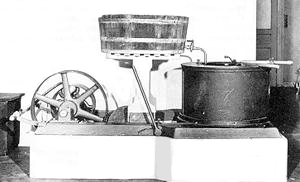 |
| Photo: Roskilde Museum. |
The churning of milk to cream and butter was all done by hand at that time, but in 1877, a German company had started to use centrifugal force to separate the milk. These early separators had as a disadvantage that they had to be stopped when the cream was ready for skimming off, and the vibration from the centrifuge could cause the milk to scum up, spoiling both the milk and the centrifuge. At the Maglekilde Factory, Mikael Pedersen was involved in the design of a continuous centrifuge. Maglekilde Maskinfabrik received a patent on 6th November 1878, with the names of Forman L.C. Nielsen and O. Petersen and Co. as inventors but no mention of Mikael Pedersen's involvement. The Maglekilde-centrifuge was set in production in Roskilde, but demand was so high that in 1881 the manufacturing rights were sold to the company of Koefod and Hauberg in Copenhagen, who began manufacturing the centrifuge and production thus ceased at Maglekilde Maskinfabrik. Mikael Pedersen was both disappointed and angry with L. C. Nielsens treatment of him. He presented himself for Jens Nielsen at the other machine works in Roskilde, "Roskilde Maskinfabrik". Jens Nielsen was more than glad to have Mikael Pedersen in his employment, as he now thought up even better improvements to the cream centrifuge, which were soon patented and the machine set in production. It was to change Mikael Pedersens life.
![]()
Mikael Pedersens last years in Marbjerg.
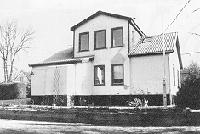 |
| Photo: Roskilde Museum, Denmark |
Until 1877 Mikael Pedersen lived with his parents at Skademosegård, but at 22 years of age he bought a piece of land with a small house, in Smedevænget in Marbjerg. The small house was soon full of drawings and models of Mikael Pedersens numerous ideas and inventions and there just wasn't enough room. Mikael Pedersen's improvements to the cream separator at Roskilde Maskinfabrik, had, in the mean time, made him into a very prosperous man. He built a much bigger house on the same ground in Marbjerg, of course doing the drawings himself. It was the most remarkable house in the district, later known as "Villaen" (The Villa), and still exists.
Mikael Pedersen lived here with his first wife Laura. The marriage was only brief, but Mikael Pedersen later met Dagmar, probably a local girl from Roskilde, who followed him to England. Mikael Pedersen was not short of money, but from the deeds of the house it can be seen that he wasn't very prompt with his payments as he received many demands that were however, always, later, suddenly paid in cash, The house was also paid for in cash.
![]()
Mikael Pedersen in England.
The named improvements to the centrifuge involved the use of a loose churn mounted on a spherical bearing of completely new design. This was really a revolutionary invention which is still used in various forms of centrifugal machinery. The invention was bought up by Koefoed and Hauberg in Copenhagen.
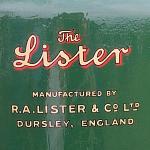 It was during these years that competition from foreign manufacturers of cream separators was on the increase and they eventually got into the Danish market. Koefod and Hauberg began to look out for markets abroad, and made contact with a large manufacturer of agricultural equipment, Lister and Co., in the small town of Dursley in Gloucestershire in England. In 1889 Koefod and Hauberg signed a contract with Listers. Koefod and Hauberg's separator with Mikael Pedersen's invention was called the "Alexandra"-Separator after King Christian IX's eldest daughter, Alexandra. (Who married the Prince of Wales, later to become Queen). From the start, there was a big demand for the separator. At one time Listers had committed themselves to supply "Alexandra" separators to the value of #27.500 to the Canadian market, but Koefod and Hauberg could not follow up with production.
It was during these years that competition from foreign manufacturers of cream separators was on the increase and they eventually got into the Danish market. Koefod and Hauberg began to look out for markets abroad, and made contact with a large manufacturer of agricultural equipment, Lister and Co., in the small town of Dursley in Gloucestershire in England. In 1889 Koefod and Hauberg signed a contract with Listers. Koefod and Hauberg's separator with Mikael Pedersen's invention was called the "Alexandra"-Separator after King Christian IX's eldest daughter, Alexandra. (Who married the Prince of Wales, later to become Queen). From the start, there was a big demand for the separator. At one time Listers had committed themselves to supply "Alexandra" separators to the value of #27.500 to the Canadian market, but Koefod and Hauberg could not follow up with production.
 |
| Photo: Roskilde Museum |
As license fees to Mikael Pedersen and Jens Nielsen at Roskilde Maskinfabrik were also overdue, director Lister suggested that Mikael should come to England to copy the "Alexandra" separator, whilst Roskilde Maskinfabrik continued to deliver the parts direct. Mikael Pedersen and his wife Dagmar went to live in Dursley in 1893, and Listers began to manufacture separators themselves which were also called the "Alexandra" separator.
This, of course, led to a court case, as Lister had broken the contract with Koefod and Hauberg.
Proceedings in London lasted for two days and ended with Koefod and Hauberg winning the case. Lister was sentenced to pay damages to the ridiculously low amount of #1000. It was suggested to director Hauberg who was in England himself, that he should represent the case. Hauberg had previously had problems with Lister and Mikael Pedersen and he replied that he just wanted to get these difficult gentlemen off his hands as quickly as possible.
In England, Mikael Pedersen soon became a very wealthy man as the result of the successful sales of the cream separator. He rented the largest house in Dursley and was a very respected man in the town. Not only because he was well off, but also because he enjoyed being in the company of other people. His circle of friends didn't consist of just the upper class but included many of the town's working class. He formed a choir, took part in concerts in the town, established a music school and a cricket club for the young workers. He played at the town festivals and was very taken up with children's welfare. As a result of his rather fierce appearance; his tall build and full beard, the children were often frightened of him, but he bought them presents and held birthday parties for them, which helped a lot. Poverty was rife in England at this time, workers received a very low wage for a working day of 12 to 14 hours. Mikael Pedersen had negotiations with Lister to improve working conditions but often in vain. Mikael Pedersen, however, found other ways of helping the workers, he paid for their children's school fees and uniforms, and on Sundays he went shooting rabbits in the countryside around Dursley giving his booty to the local housewives. Many tales are told of Mikael Pedersen and his rather special lifestyle which attracted certain attention in England at that time. He was very outspoken, expressing his meaning on all sorts of subjects without reserve. He could be very harsh and hard but he had a fine sense and humour and enjoyed practical jokes which amused the English. He was in reality a warm-hearted man willing to help his fellow men and involved himself in human problems. Mikael Pedersen was a ladies man, he was charming and in his young days, quite a handsome fellow. He enjoyed a glass of beer and was often to be seen in the town's many pubs.
![]()
Mikael Pedersen and the family.
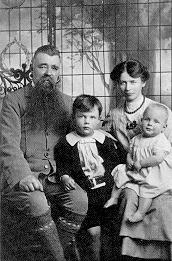 |
| Mikael and Ingeborg Pedersen with their sons Palnatoke and Vaughan. Photo: Finn Wodschow |
As mentioned before Mikael Pedersen was first married to Laura but there were no children and the marriage soon broke up. Whether he was actually married to Dagmar is not certain, but she followed him to England, where she appeared as his wife and secretary. It was Dagmar who received visitors when Mikael was away on business, as he was often in connection with Cream-separator and bicycle production.
Dagmar was of quite a different personality, however, just the opposite to Mikael Pedersen. She kept mostly to herself in the big house and didn't mix with the local people who found her rather too refined and as a result she wasn't very popular with them. Raglan House was fitted out with large Victorian leather and other heavy furniture, and Mikael Pedersen often brought home musical instruments and models of his endless inventions, and laid them about all over the house.
This behaviour didn't please Dagmar but she did take part in many of the musical evenings, that Mikael Pedersen arranged at the house for the entertainment of the towns finer folk. Mikael Pedersen had at some time acquired a large collection of medical instruments and inventory form the famous English doctor Jenner, it had been given to him as deposit by a man who owed him money. At some later date he was asked, by a group of people who were about to establish a Jenner museum, if they could send a man to buy the collection. This man wrote in his report to the medical museum, concerning his meeting with Mikael Pedersen. "I came into a large room full of carved furniture with a huge crystal chandelier hanging form the selling, and with swords and other weaponry covering all the walls. There were musical instruments all over the place, and all kinds of strange things, machines, and models of inventions hidden behind all the furniture. Then this remarkable, wily Dane entered the room, a tall dark man with a mop of hair and full beard." and the report continues to explain that Mikael Pedersen would only sell the Jenner collection for a very high price.
One can only guess as to Mikael Pedersen and Dagmar's relationship, it had probably not been very good and there were no children. Dagmar finally disappeared from Dursley after claiming a large sum of money form Mikael Pedersen, and nothing is known of what became of her.
About 1906 Mikael Pedersen turned up with another woman, Ingeborg.
Mikael Pedersen visited Denmark several times and often visited his brother, Hans Mathias, a musical director in Stege-Lendemark. Hans Mathias led the local orchestra together with the editor of the district newspaper, "Møens Folkeblad", Jens Kristoffer Jensen. Mikael Pedersen played in the orchestra during his visits and was often at the newspaper office. It was here he met Ingeborg, 29 years his junior, with whom he fell in love at first sight.
In 1907 Ingeborg went to Dursley and moved into Raglan House, where she gave birth to their first child, a boy in 1908. He was christened Palnatoke, (hero of a Danish saga) an expression of Mikael Pedersen's sense of humour. Ingeborg gave birth to a daughter, (who died at two years old), and two years later another son, Vaughan, who was the one that came to see me in Lyngby in 1975. The youngest son Svend was born in 1914. The three children at Raglan House and Ingeborg, who was quite different to Dagmar, created a new life for Mikael Pedersen. Ingeborg soon fell in with the local people, extrovert and kind person that she was. Mikael Pedersen and Ingeborg were quite well to do and of course had nurses for the children and other help in the house. All later correspondence to Ingeborg, when Mikael Pedersen was ill and drinking heavily, shows how popular she was.
During the first World War she worked in a ammunition factory in Bristol, 25 miles away, at the same time writing articles about war conditions in England and sending these to her old employer the "Møens Folkeblad" in Denmark.
Mikael Pedersen spent some time in the homeguard, and thought out various improvements to military equipment. The special cartridge bandolier, the military bicycle that could fold together, even a high speed cannon it is said, could shoot so fast that it couldn't be loaded fast enough!
At this time Mikael Pedersen had little time for family life, the musical evenings ceased and of course the age difference between Mikael Pedersen and Ingeborg became more apparent. He was now 60 and she only 31, and there were often differences on family life when he occasionally was at home.
![]()
The Ruby Team

STALWARTS OF FOURTHY YEARS AGO:
We have much pleasure in reprodusing this picture, kindly lent by Mr. F Hitchings, senr., of the Dursley Star Rugby Football Club, taken by
Mr. T. H. Price, Parsonage Street, Dursley, in 18??.
In the group are:
Back row (left to right)
M. Pedersen, H. Grigg, W. Hewish, W. French, R. Hewish, F. Wood, ? Marks.
Middle row
F. Hitchings, W. Terrett, J. Cross, C. Smart, A. Dauncey, D. Atkins.
Front row
J. French, ? Atkins, G. Hancock, A. Morgan.
![]()
Mikael Pedersen and Anders Mellerup
 Anders Mellerup (23th February 1873) was one of several Danish artisans that Mikael Pedersen persuaded to join him in England.
Anders Mellerup (23th February 1873) was one of several Danish artisans that Mikael Pedersen persuaded to join him in England.
He served his apprenticeship and worked as a smith at Roskilde Maskinfabrik. It was here he became acquainted with the Cream Separator and Mikael Pedersen.
When Anders Mellerup reached his 21st birthday Mikael Pedersen induced this clever and skilful young man to come to England, where the future for Cream Separator production would be.
Anders Mellerup went to Dursley and having talent for business and economy, as well as being skilful, he soon became responsible for all production of Cream Separators at Listers.
This gave Mikael Pedersen more time to concentrate on development and invention, even more so when Anders Mellerup, later, also became foreman for cycle production. Anders Mellerup and Mikael Pedersen were very different types but they had great respect for each other.
Jens Jørgensen and Rasmussen were two other Danish journeymen, from the Roskilde district, who Mikael Pedersen got to come and work with cycle production in Dursley.
Little is known about them except that they were both good cyclists winning many races on Dursley-Pedersens, to the surprise of many.
Mikael Pedersen , Anders Mellerup, Jens Jørgensen, and Rasmussen made their mark on the small town, their behaviour often causing indignation in those Victorian times. They appear in the local historical archives, and this interval of time is referred to as The Danish period. It's often compared to the second Viking era when Danish Vikings sailed up the river Severn to reach the environs of Dursley.
![]()
Mikael Pedersens acquaintance with the Danish author Gustav Wied
 |
|
The Danish author Gustav Wied.
Photo: Roskilde Museum. |
When Mikael Pedersen was in Denmark on his many visits, he stayed, as mentioned, with his brother Hans at Stege-Landemark. In the musical circle around the editor of Møens Folkeblad (the local gazette), Jens Kristoffer Jensen, the author Gustav Wied was also to be found, and it was here they met each other for the first time. It was Mikael Pedersen unostentatious manner and partly his appearance, that later inspired Gustav Wied to the figure of "Knagsted", the customs man, in his novels. When Gustav Wied moved to Roskilde, they met each other again, and became good friends. They were both fond of parties and celebrations and there are tales of many lively evenings at Mikael Pedersen's house in Marbjerg, where Gustav Wied was often a guest. These parties were held in a large saloon (Salen) on the first floor. From the saloon, a door led out to a balcony which had never been completely finished. When the men had had plenty to drink and were ready to urinate they went out onto the balcony where there was no railing, Mikael and Gustav Wied found it of great amusement to push unwitting participants over the edge and down onto the flower bed below.
Mikael Pedersen gave instructions for the bicycle, which were given to Gustav Wied, it was to be buried in the garden of Gustav Wied, after Gustav Wied death. This story has neither been confirmed nor denied, but anyway the bicycle belonging to Gustav Wied, of which there are several pictures, has never been found after the death of Gustav Wied.
![]()
The final time in Dursley
Listers production were partly turned over to the manufacture of arms in World War I.
At one time the navy gave Mikael Pedersen the use of a warship to try out improvements to cannons which he had suggested. Nothing came of this before the war was over but his ideas were used in cannon production later.
There was another invention that Mikael Pedersen had great success with, this was a very accurate instrument for controlling dimensions on ammunition for rifles and cannons.
Mikael Pedersen and Ingeborg's war effort was highly respected in the town. It amused Mikael Pedersen and many others, when he was suspected of spying for the enemy because the nurse in the house was a German.
The police kept Mikael Pedersen under observation for some time but they often had great difficulty in following him. Mikael Pedersen and his Danish colleagues were riding bikes with 3-Speed gears, so the police gave up the chase.
Cycle production fell gradually and was partly taken over by other companies round about in Gloucestershire. Licence fees to Mikael Pedersen remained unpaid, and with his lack of sense for business, he was often cheated out of other payments.
Another problem was his increasing alcohol misuse and his marriage was not going well. Ingeborg had bought a factory just outside Dursley where instruments of Mikael Pedersens design were produced. She did this in order to keep herself and the children as Mikael Pedersen never had any money to support his family. In 1918, Ingeborg left Dursley with the children and moved to London, her instrument production ceased, and she lost almost all her savings so that she was dependent on help form her family in Denmark.
Mikael Pedersen had developed a cancerous tumour above his right eye which he was operated on, but this didn't have any effect on his way of life.
He disappeared one day and for a couple of years nobody knew what had become of him; his time in Dursley had come to an end.
The house in Dursley was sold with all its contents and Ingeborg went back to Denmark where she lived with the family at Stege-Lendemark. She married the editor Jens Kristoffer Jensen, and the boys changed their surname to Jensen.
Ingeborg did everything to forget Mikael Pedersen and it wasn't allowed to mention his name among the family. Later there simply arose a trauma, among the children and grand-children, as to who this grandfather Mikael Pedersen was and what had become of him.
Ingeborg had taken over the house at Marbjerg that had stood empty for many years. During the war it had been requisitioned for the use of conscripts to the security force, who found all Mikael Pedersens furniture and wooden models suitable for firewood during the cold winter months. Ingeborg sold the house later and bought a house in Holte, north of Copenhagen, where she moved, together with her sons.
![]()
Mikael Pedersen back in Danmark
One day a good friend of Mikael Pedersen's was walking down a street in London when a shabby old man selling matches caught his eye and he recognised Mikael Pedersen straight away, and arranged to pay for him to travel back to Denmark.
Destitute and in poor health Mikael Pedersen returned to Denmark in 1920 where he lived for a time with his brother Ole who was a vicar in Randers, Jutland. Here livened Mikael Pedersen up a little finding something of his old self again.
This however, was not always to the liking of the vicar, his family and parishioners as Mikael Pedersen could, often, during Sunday service, make loud remarks to his brother's sermon, in the end they couldn't have Mikael Pedersen living with them no longer. For some time he lived alone in his house at Marbjerg, and after that with various distant relations. During this time he had no contact with his former wife Ingeborg or the children who weren't to know that their father was back in Denmark.
His health began to deteriorate again and in the end a friend managed to get him admitted to "The Old Peoples Town", a nursing home in Copenhagen, he lived here a year in complete obscurity no one being aware of his famous past in England.
Mikael Pedersen died on the 22nd. October 1929 and was buried, without any ceremony, in the graveyard at Bispebjerg a Copenhagen suburb. An unspecified grave without any stone or mark of any kind was paid for by an aunt for a period until 1955. After this the grave was reclaimed and made available for a new burial which fortunately never happened.
![]()
His personality
How can one sum up the personality of this man?
Often so deep in thought, keenly musical, obstante, restless, socially extrovert, unbelievably inventive and creative, charming, warm-hearted and helpful, having had a fantastic life and much, much more, but completely lacking comprehension of the cold world of business.
Here in this pauper's grave lay the remains of the inventor of such an important thing of the times, the Cream separator. Where, in reality, it should have been the Danish Ministry of Agriculture that should have raised a memorial to an inventor who made such big improvement to Danish agriculture, it was instead a group of English cyclists who gave him the honour he should have had in Denmark.
A ceremony was held in Dursley in 1979 where a memorial plaque was unveiled at Raglan House the whole town taking part, as well the Danish ambassador and about 200 Dursley-Pedersen owners from all over the country.
In England, Germany and Denmark, enthusiast clubs were started, and a new production of Pedersen cycles, known as the "Christiaina-cycle" began in Copenhagen and was soon to be exported all over the world.
Postscript
This should be the end of the story of Mikael Pedersen, but no. For many years there was indignation in England and especially in Dursley about the fact that such a famous man as Mikael Pedersen lay in a pauper's grave unnoticed and still without so much as a head stone.
In 1995 a collection was started to raise funds in order to bring Mikael Pedersen's remains back to Dursley and re-bury them there. With some difficulty, permission was given for the exhumation, the remains were put into a port wine box and taken back to England and re-buried at Dursley. The service was attended by over 300 people, including the Bishop of Gloucester, representatives from the Danish Embassy and Mikael Pedersen's grandchildren. It was an event that will never be forgotten by those taking part, both solemn and light-hearted, just like in the spirit of Mikael Pedersen.
Mikael Pedersen was given the burial service he should have received in 1929 and where he should have had his epitaph in Denmark.
He was given an inscribed, black marble headstone in Dursley. This was one of the events of the year being given column space in all the English newspapers as well as being covered on the BBC by both radio and television.
A remembrance service is now held each year, on Mikael Pedersen's birthday, with enthusiasts form near and far taking part.
Last journey of a cycle genius
by Allan Guy.
The Gazette. Friday, Sep. 22, 1995 No. 6,074
Genius, inventor and maker of the pioneering Dursley Pedersen cycle,
Mikael Pedersen exhumed from an unmarked pauper's grave in Denmark, was reburied in Dursley cemetery yesterday.
Around 100 members of his family, friends and Pedersen cycle enthusiasts gathered as his remains, contained in a black-painted former port wine box, were lowered into the grave.
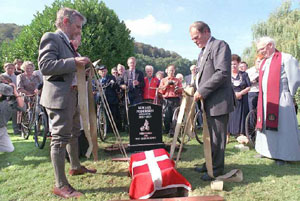 |
|
Draped in the Danish flag, the port wine box containing the remains of "The Ingenious Mr Pedersen" are lowered into their final resting place in Dursley cemetery. |
Three daughters of Pedersen's son, Svend, and two daughters of his son Vagn, together with five grandchildren, travelled from Denmark for the service.
So did Finn Woodschow, a Pedersen cycle enthusiast who tussled with the sometimes helpful, sometimes obstructive Danish authorities for permission to exhume and export Pedersen's remains. Although they demanded a passport for him, they did request a photograph.
There was also present a representative from the Danish Embassy and members of the Mellerup family from Dursley.
With Leslie Bowerman, president of the Veteran Cycle Club, Mr. Woodschow lowered Pedersen's remains as Pedersen cycle enthusiast the Rev. Patrick Birt, form Dorset, and Dursley town councillor the Rev. Ernest Clarke conducted a service.
Monumental masons Mossfords, of Thornbury, provided free, a black tombstone engraved with a Pedersen cyclist and the inscription:
Inventor 1855-1929
Re-entered 1995
The last Journey."
The graveside ceremony ended with Pedersens relatives laying a commemorative wreath at the foot of the tombstone. Town Mayor of Dursley Cllr. Pat Connors had welcomed everyone to the service.
Enthusiasts who gather for the annual Pedersen run round Windsor Great Park on sunday may now consider making an annual visits here.
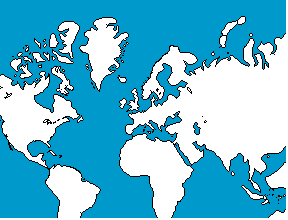 |
Mikael Pedersen was born in Marbjerg, not far from the Capital of Denmark, Copenhagen, Seeland, Denmark. Denmark has a surface area of 44.000 km2 and has 7500km of coastline. There are 5.5 million citizens. We have a constitutional monarch, Queen Margrethe II, who we all love and admire. |
